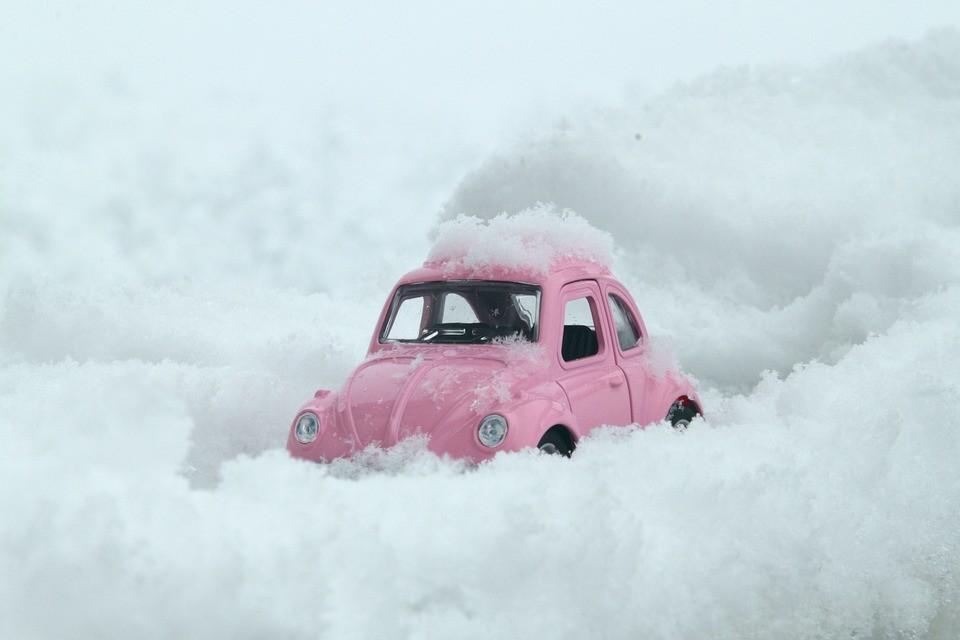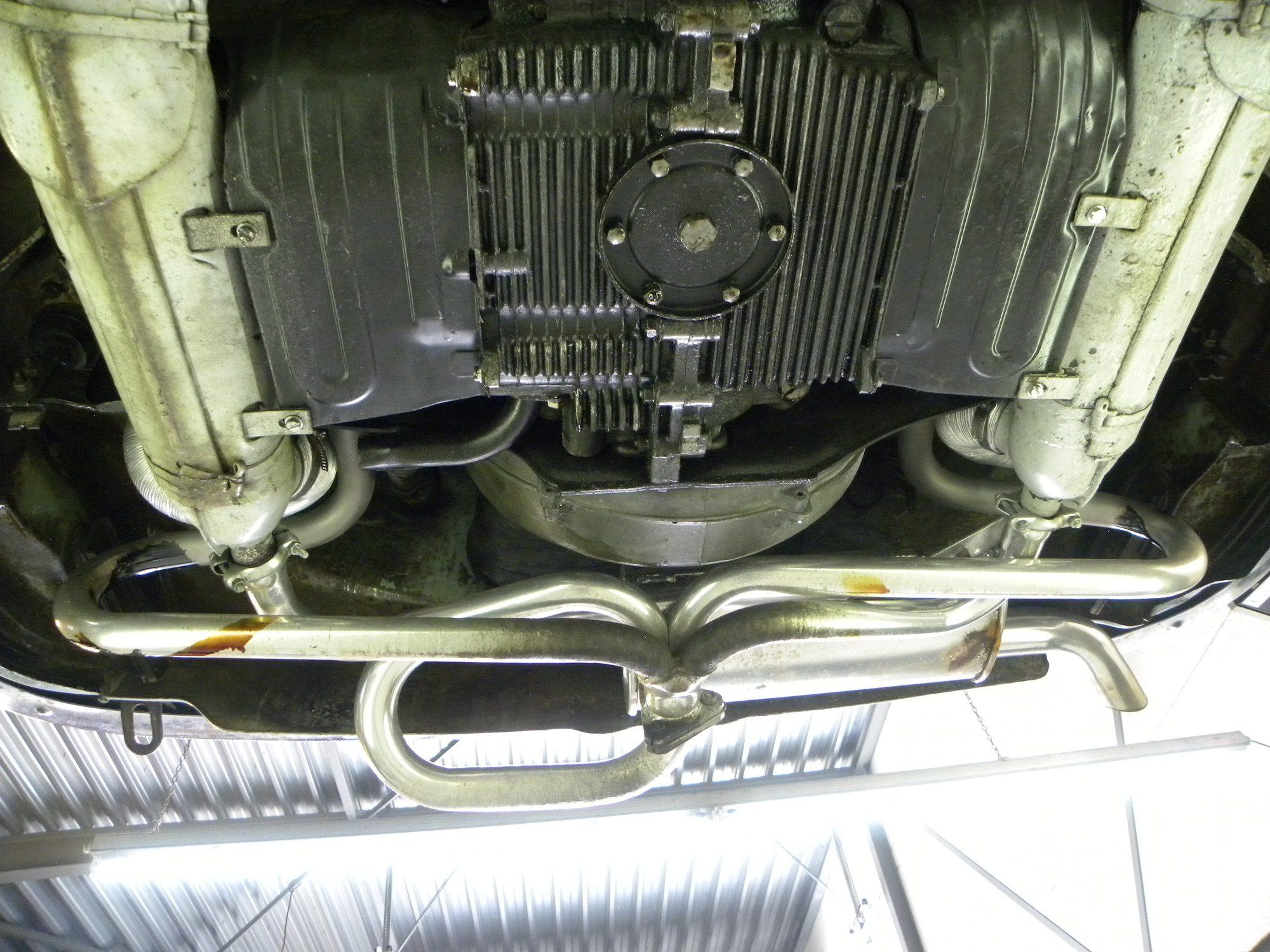It was not the least brands that made air-cooled engines: VW, Porsche, Tatra, NSU, Chevrolet, Magirus ... Making air-cooled engines is easier and cheaper. Once the biggest advantage was that they weighed less, did not leak or frozen. The biggest disadvantage was that air-cooled engines left the occupants in the cold during the cold months of the year.
The 'heating' was provided by the cooling air from the cylinders
Those cylinders were 'blown' with a fan, they gave off their heat and in the summer the warm air simply disappeared outside. In the autumn and winter the air did not warm up quickly. The lukewarm to warm air was then led through insulated tunnels to the discharge openings to contribute to the chilling of the occupants. Companies such as the German Eberspächer played on this in gas-fired parking heaters or additional heating systems. Other manufacturers were not always as good as Eberspächer. Quite a few cars went down. That was nice and warm. But his goal passed.
So liquid cooling became the valued successor to air cooling
Also because the temperature management of a liquid-cooled engine can be controlled much better. And because the noise requirements became increasingly strict. The fan of air cooling usually makes a howling sound that not everyone experiences as fantastic. The already limited functioning of the heating in air-cooled cars is often lessened in the case of classics because the valve control system that controls the heat often works sub-optimally.
With water cooling, cooling water is pumped past the object to be cooled
Due to the large heat absorption of water, water cooling is usually more effective than air cooling, whereby the air flows directly over the surface to be cooled. The coolant loses its heat through the radiator with the heat being released to the air over a large area. Then the cycle starts again. The air flow between the slats of the radiator can thereby be considerably increased by a fan. It is important - certainly for our classics - that the radiator is not contaminated internally, that the space between the radiator blades is open and that the water pump is okay.
Water cooling is complicated
The disadvantage of water cooling compared to air cooling is that a much larger, heavier and more complicated installation is required, where air cooling requires a fan (forced air cooling) is already a nice feat. In addition, there is a risk of a short circuit in the vicinity of electrical components. The water jacket provides additional insulation, making water-cooled engines quieter than air-cooled (but also heavier).
In closed systems, which cannot be maintained, such as the cooling system of an internal combustion engine, a special coolant is generally used to prevent limescale, foaming and corrosion and because of the lubricating action for moving parts, such as the coolant pump and the thermostat. . The use of (demineralized or non-mineralized) water is mandatory for some branches of motor and motor sports, as leakage occurs more frequently in the heat of battle and the environment is protected.
But now it's cold
And 'cooling water' can freeze. A case that plays less for Maserati enthusiasts than for the brave Volvo 240 driver that I see every day, but still. And we have antifreeze for that. Antifreeze lowers the freezing point of the coolant (and usually also ensures that it boiling point higher). The main antifreeze types are ethylene glycol, formerly ethylene glycol, glycerol, methanol and propylene glycol.
Coolant is a ready-made product. Antifreeze is an addition.
Both coolant and antifreeze owe their cold protection to ethylene glycol. However, the application differs. Coolant is a ready-made product that is used undiluted and has been specially developed for engine block cooling. Antifreeze is cheaper, needs to be diluted, but can cause corrosion. A good quality coolant provides frost protection up to -40 ° C. The cheaper types go less far, but are usually sufficient for Benelux use. In all cases, the manufacturer has added anti-corrosion agents - so-called inhibitors - that neutralize aggressiveness. After such an 2 à 3 year, these become exhausted and the coolant must be replaced. The much cheaper antifreeze must itself be diluted with water. The amount added determines the degree of frost resistance:
Do not simply drain old coolant when draining. The coolant's sweetness factor makes it a top drink of choice for cats and dogs and other furry and winged creatures. And they die from it.






I read it but didn't understand. What we're missing and I don't understand that the exhaust or exhaust nozzle gets red hot and very soon after starting. around it is a stove mantle that makes cold air hot super fast in my opinion. Of course, it depends on the length of the pipe/hose whether a lot of heat is lost along the way. My conclusion is that this kind of heating is the most efficient, at least in the beginning, when we need it most for defrosting, demisting and comfort. After all, with water-cooled engines you also get cold air that heats warm water indirectly. Add to that the fact that modern fuel-efficient cars need a significantly longer time to warm up. I have a Skoda Fabia 1,2 TDi diesel greenline that only starts to heat up after 10 km at about 0 gr C. I remember that the Citroen GS was up to temperature very quickly and within 1 minute after starting it was so warm that you could hardly keep your hand in it. Cooling water heating is also just air heating. At the time, a colleague with an NSU-prinz 4 600 cc did complain about frozen side windows and not enough heat, but the engine was behind and the warm air had to travel 3,5 m to reach the windshield and feet. Perhaps that was the flaw. BMW 700 ls had that too. I also believe that it has been abandoned because of the risk of cracks in the jacket on exhaust gas in the car.
Again a very well-founded and informative article Dolf. Big thanks again!
After reading and enjoying this, I immediately had to think of the TATRA air-cooled 603, with an air-cooled V 8 engine placed in the rear, yes, that I once briefly drove in the distant past. A very spacious, almost 6 person voiture with its striking three headlights.
Looked a bit like the so unique Tucker…. Not quite “suicide doors like one of my favorite designs, the Ford Lincoln Continental. Wow ...
That so special, in terms of inner and outer concept car eventually heated the occupants to reasonable to good satisfaction.
It was a different way of driving with this heavy rear-mounted V8 engine.
Compare this with the world famous VW Beetle (Beetle) where to get a better road holding, a number of 30 × 30 cm paving stones had to be deposited in the front.
And the infamous Chevrolet 6 cylinder GM Chevrolet Corvair (1960 / 1969) with z, n also placed in the rear air-cooled heavy engine.
I think it was declared life-threatening and dead at the time by one Ralph Nader, the USA Frits Bom consumer TV presenter. Forgive me if I am not correct.
This after the Corvair turned out to exhibit the ability to make an 360 degree spin / turn during emergency situations of having to brake heavily. And just not yet made an 3D looping like in an aerobatic aircraft / fighter jet. And this handling led to fatal crashes.
Alfredo.
PS
Theo Price.
The famous Panhard, also called the Panharing at the time, was also in a “class” of its own.
It was not the least brands that made air-cooled engines! And there it is Citroën NOT included, builder of the legendary duck, Ami, GS and GSA. And don't forget Panhard with his Tigre engine.
Mea culpa! And there are a whole bunch of those cars in the circle of acquaintances